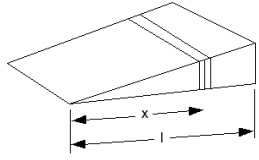Assignment:
1) Two thin converging lenses of focii 10cm and 20cm are separated by 20cm. An object is placed 15cm in front of the first lens. Find the position of the final image and the magnification of the system.
2) A diverging lens has a focal length of -15cm. An object 2cm in height is placed 50cm in front of the lens.
(a) Locate the position of the image
(b) Find the magnification of the lens and
(c) Find the height of the image
3) (a) Consider a concave spherical mirror with a real object.
Is the image erect or inverted? Is the image real or virtual?
Examine the conditions when;
(i) the object is further away than the center of curvature C,
(ii) object is positioned at C
(iii) object is at the focal point and
(iv) the object is closer than the focal point.
Draw diagrams to illustrate your answer.
(b) Consider a convex spherical mirror. Is the image real or virtual, is it erect or inverted?
Draw diagrams for two different positions of the object to illustrate your answer.
4) In a Young's interference experiment, the 2 slits are separated by 0.15mm and the incident light includes light of wavelengths λ1 = 540nm and λ2 = 450nm. The overlapping interference patterns are formed on a screen 1.4m from the slits. Calculate the minimum distance from the center of the screen to the point where a bright line of the λ1 light coincides with a bright line of the λ2 light.
(There is no need to include single slit diffraction effects here.)
5) Young's double-slit experiment is performed with sodium yellow light (λ = 5890 Angstroms) and with a slits-to-screen distance of 2.0m. The tenth interference minimum (dark fringe) is observed to be 7.26mm from the central maximum. Determine the spacing of the slits.
6) A piece of transparent material having an index of refraction n is cut into the shape of a wedge as shown in the figure. The angle of the wedge is small, and monochromatic light of wavelength λ is normally incident from above. If the height of the wedge is h and the width is l, show that bright fringes occur at the positions x = λl(m+1/2)/2hn and dark fringes occur at the positions x = λlm/2hn, where m = 0, 1, 2, ... and x is measured as shown.
